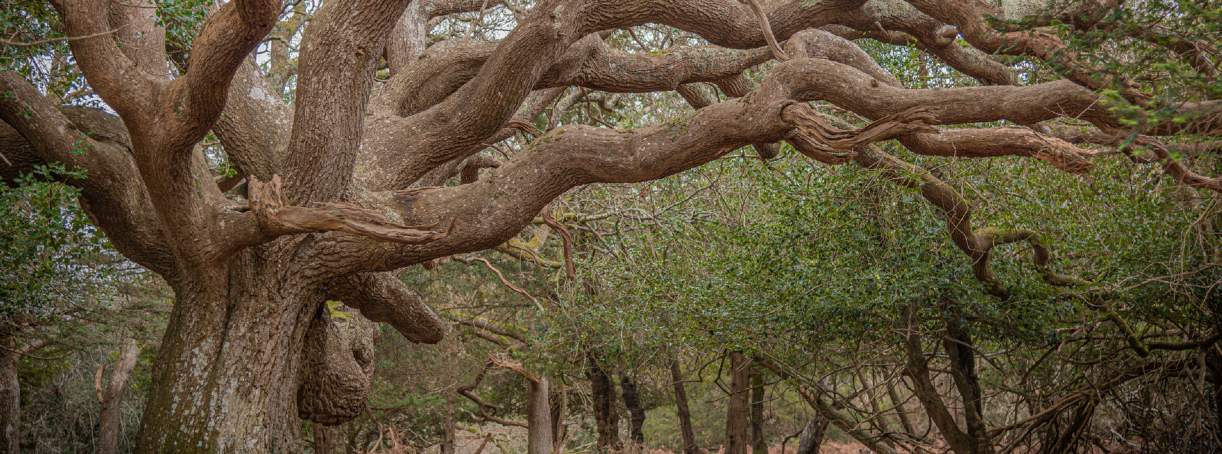An ancient yew tree at Waverley Abbey in Surrey is representing the UK in the European Tree of the Year contest 2023 (yes, such an accolade does exist, winner to be announced on 21 March), having been crowned The Woodland Trust’s tree of the year in 2022. The Waverley yew is a great example of the many ancient and veteran trees scattered across parklands, woodlands, churchyards and urban environments in Britain. In Wales, there are yew trees thought to be between 2,000 and 3,000 years old; their life span is so long it is difficult to comprehend the cultural, social and ecological significance that these trees have.
It is unclear how many ancient trees there are in Britain, and while attempts are being made by the Ancient Tree Register to plot them, the numbers are in decline. To this point a number of factors have allowed these trees to survive, whether this is the historic protection offered by the creation of forests by the Normans, a legacy of pollarding trees to produce fodder for animals, or simply because a tree is located on land which has had a continuity of ownership. The problem is modern practices are causing ancient tree numbers to decrease without a future generation waiting to take their place.
While it is true that there are forms of protection available for ancient and veteran trees such as a Tree Preservation Order (TPO), these are designed to protect trees when they are publicly accessible and seen as having a high amenity value. In the case of ancient trees, many are situated in the middle of a field or woodland, or may not have been ‘discovered’ and as such it can be very difficult for a local planning authority to justify that a tree warrants a TPO when no one is able to see it.
Protection can also be offered to ancient woodland by the provision of buffer zones as set out in the National Planning Policy Framework, and from 1 January 2023 illegal tree felling will be punishable by uncapped fines and prison sentences as the Government attempts to clamp down.
The Woodland Trust and Ancient Tree Forum are currently in the process of trying to petition the Government to give ancient and veteran trees better protection. A variety of possibilities are under consideration including the idea of listing trees in a similar way to buildings.
In my opinion any new legislation should look to give automatic protection to a tree according to age or size, and not rely on citizen science to identify suitable candidates. Norway offers an interesting pathway. Legislation which came into force in 2011 means, for example, that any oak tree with a circumference of 200 cm diameter or greater is protected.
The example of Norway shows that there are systems in place which can work and offer a robust practical solution to this difficult problem. It is important that a wide variety of stakeholders across the tree and conservation sector, as well as those with experiences of other protection systems, are part of the discussion to find a suitable system for the UK.
The bigger challenge to consider is how to change people’s perception of trees. We need to see ourselves as custodians of ancient trees rather than owners if we are to offer the protection they deserve.

.jpg)

.jpg)
.jpg)
.jpg)




